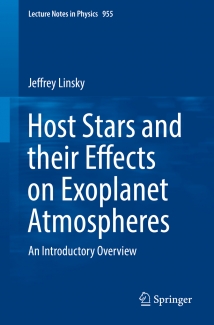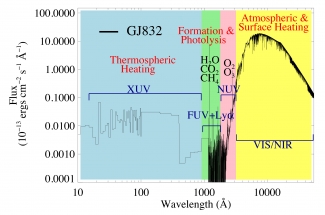As astronomers and physicists explore the universe beyond our solar system, exoplanets are tantalizing mysteries. Are there other planets like Earth? Could these planets host life? Do they have oceans?
Since 1995 NASA has confirmed the existence of more than 4,000 planets outside our solar system. But if you want to learn about an exoplanet, JILA Fellow Adjoint Jeffrey Linsky says there’s an important factor that is often overlooked.
“You can’t understand an exoplanet without studying its host star,” he said.
That succinctly sums up Linsky’s most recent book Host Stars and their Effects on Exoplanet Atmospheres. After 60 years of studying stellar atmospheres, Linsky decided it’s time to do a “data dump” and impart that knowledge to future scientists.
Our own sun is host to broad diversity of planets. Exoplanet studies have discovered planets we couldn’t imagine: hot Jupiters, super Earths, and mini-Neptunes to name a few. These new planets all vary in size and composition (whether it’s rocky or a gas planet) but those are not the only factors that create a planet’s environment.
“What we’ve learned over the last 20 years is this is complicated. There are many variables, from the star, the planet's magnetic field, and the spectral energy distribution of starlight from X-rays to the infrared,” Linsky said. “My book is ‘here’s what stars do.’”
A host star can explain, even predict, the environments of the planets orbiting them. It’s not just about how hot the star is. Its stellar winds, coronae and chromospheres can drastically change how their surrounding planets form and evolve. Space telescopes like the Chandra X-Ray Observatory and Hubble use X-rays and ultra violet wavelengths of light to study a star’s atmosphere. That information can shed a lot of light on new exoplanets orbiting these stars.
“One of the joys of the field is that there’s all these young people doing very important work,” Linsky said. However, many of those bright young minds don’t know as much about how a star affects its surrounding planets. The book is intended for anyone with a science background, but it’s particularly helpful for graduates who are interested in pursuing exoplanet studies.





